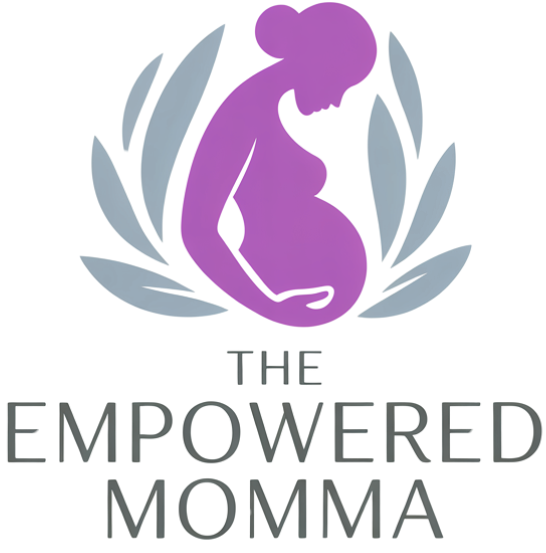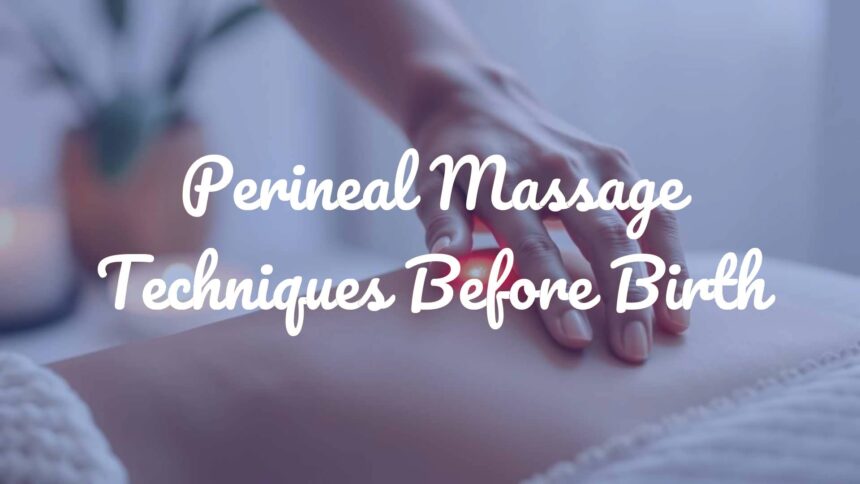Perineal massage before giving birth means gently stretching the skin and muscles between the vagina and anus with your hands. Many people choose to do this to help their bodies get ready for a vaginal birth. But what exactly does it involve, and how can it help? The idea is to help the perineum-the area at the base of the birth canal-become more stretchy and soft, so there’s less chance of tearing or needing a cut called an episiotomy when having the baby. Getting used to this stretching feeling before labor can also help reduce soreness after birth and make recovery faster.
What Is Perineal Massage Before Birth?
Perineal massage is a method used during pregnancy to gently stretch the perineum. This is important because, during birth, these tissues need to stretch a lot to let the baby come through. Massaging the perineum regularly can help your body get used to this feeling, making the tissues softer and more ready for labor and birth.
Where Is the Perineum?
The perineum is the skin and muscles found between the vaginal opening and the anus. It’s about 3.5 centimeters long and is an important part of the pelvic floor. This area helps support internal organs, helps you stand and walk, and helps prevent leaking urine. During childbirth, this area stretches quite a bit to let the baby pass through.

What Does Perineal Massage Involve?
Perineal massage means gently massaging the area between the vagina and anus, usually in the last weeks of pregnancy. This involves putting one or two fingers (often thumbs for self-massage) slightly inside the vagina and pressing gently down toward the anus and then out toward each side. The aim is to help these tissues stretch more easily during birth, rather than tear.
Why Is Perineal Massage Suggested in Late Pregnancy?
People are often advised to do perineal massage in the final weeks of pregnancy. This practice helps get the perineum ready for the big stretch that happens during vaginal childbirth. By making these tissues softer and more flexible, you may lower the chance of tearing. Fewer tears or cuts usually mean less pain and a quicker recovery after the baby is born.
How Can Perineal Massage Lower the Risk of Tearing?
The main goal of perineal massage is to lower the risk of perineal tears. Stretching these tissues regularly helps them become softer and more used to pressure, which makes them more likely to stretch rather than rip during birth. Studies have shown that perineal massage decreases the chances of serious tears, especially for first-time mums. It also helps you get used to the feeling of stretching and pressure, making it less surprising during labor.
Can Perineal Massage Prevent Episiotomy?
Perineal massage can reduce the chance of needing an episiotomy (a cut made by a doctor or midwife to help the baby out). Research suggests that people who do perineal massage regularly have a lower rate of episiotomy, mainly for their first vaginal birth. Softer and more flexible tissue is less likely to need this procedure.

Who Benefits Most from Perineal Massage?
Perineal massage is useful for most people expecting a baby, but especially for first-time parents. First vaginal births are more likely to involve tearing or episiotomy because the perineum is less used to stretching. People who have had babies before can still benefit from massage, since it keeps tissues soft and helps avoid more injuries. Anyone hoping to lower the chance of tears can consider adding this massage to their routine.
When Should You Start Perineal Massage?
Timing matters for perineal massage. Most people are told to start in the last part of pregnancy, so the perineum has time to get softer before labor. Always talk to your doctor or midwife before beginning any new activity in late pregnancy.
Best Time in Pregnancy to Start?
Most doctors suggest starting perineal massage at around 34 or 35 weeks pregnant. This gives you several weeks to practice before the baby comes. Some people start during the last 3 to 4 weeks. You should check with your health provider for advice that fits your own situation.
How Often Should You Do Perineal Massage?
The usual advice is to massage the perineum once or twice a week, up until labor. Some people choose to do it every day for up to 5 minutes per session. You don’t need to do more than that, as more frequent massage doesn’t seem to give extra benefits. Each massage lasts about 5 minutes, giving plenty of time for gentle stretching.

How to Do Perineal Massage: Step-by-Step
Perineal massage might feel strange at first, but it gets easier with practice. The main idea is to be gentle and relaxed while you stretch the perineal tissues. You can do it yourself or ask your partner to help. Here’s how to get started:
Preparation: What You Need
- Wash your hands well with soap and water for at least 20 seconds
- Trim your fingernails to avoid accidental scratches
- Empty your bladder for comfort
- Take a warm bath or shower or use a warm compress on the area to help muscles relax
- You might want a mirror to help you see (especially at first)
Recommended Oils and Lubricants
| Type | Good To Use? | Notes |
|---|---|---|
| Water-based personal lubricants | Yes | Gentle, easy to wash off |
| Sweet almond oil | Yes (if no nut allergy) | Natural, smooth |
| Olive oil | Yes | Natural alternative if nut allergies present |
| Baby oil, mineral oil | No | May cause irritation |
Avoid nut oils if you have nut allergies, and stay away from lubricants with a lot of added chemicals or salt, as these may cause irritation.
Best Positions for Massage
- Sitting up in bed with knees bent
- Squatting with your back against a wall
- Propping one leg up on the edge of the bathtub or toilet (especially helpful in the shower)
- Sitting on the toilet

Use pillows for support if needed, and change positions if you feel uncomfortable.
Steps for Self-Massage
- Apply your chosen lubricant to your thumbs and the perineal area
- Place your thumbs inside the back wall of your vagina, about 2.5-5 cm (1-2 inches) in
- Press gently down toward your anus and out to the sides to stretch the tissue
- Hold for 1-2 minutes, breathing deeply
- Massage in a U-shaped motion along the lower back wall of your vagina for 2-3 minutes
- Repeat these steps a few times during each session

You might feel a mild burning or stretching at first; this often fades with practice.
Steps for Partner-Assisted Massage
- Your partner washes their hands and trims their nails
- You get into a comfortable position
- Your partner uses their index fingers to gently massage, following the same steps as above (press down and out in a U-shape)
- Keep talking to your partner about how much pressure feels right-this should never hurt
- Sessions can last up to 5 minutes
Tips for an Easier and More Useful Massage
Dealing with Discomfort
- It’s normal to feel a sharp or burning stretch at first-this should get better after a couple of weeks
- Warm baths or compresses can relax you and make massage more comfortable
- Always use lots of lubricant
- If anything feels wrong (sharp pain, blood, unusual discharge), stop and call your doctor or midwife
How to Help Your Perineum Stretch Over Time
- Be gentle and give your body time to get used to it
- Start with less pressure and shorter sessions, then add more as you go
- Focus on staying relaxed and breathing deeply
- Try to hold each stretch for up to 2 minutes at a time
How to Tell You’re Doing It Right
- You feel a stretching or gentle burning-but not strong pain
- Stretching feels easier after a few weeks of practice
- The tissues become softer and more stretchy
You should not be creating pain, just helping your body get ready for giving birth.
Are There Any Risks or Reasons Not to Do Perineal Massage?
Perineal massage is safe for most people, but there are a few times when it should be avoided. Always check with your doctor or midwife before starting.
When to Avoid Perineal Massage
- Before 34 weeks pregnant (could trigger early contractions)
- If you have a vaginal infection (like thrush or herpes)
- If you are bleeding from the vagina
- If you have a low-lying placenta or short cervix
- If you have severe high blood pressure in pregnancy
- If you have cuts or infections on your hands/fingers
- If your “waters” have broken, or you’ve had surgery on your perineum-ask your healthcare provider first
Possible Side Effects
- Mild stretch, burn, or stinging, especially in the beginning
- If you have pain, bleeding, or signs of infection (unusual discharge, fever, redness), stop and contact your doctor
- Doing the massage the wrong way or when you shouldn’t may cause irritation or infection
Checking with your health provider is the best way to make sure perineal massage is right for you and your pregnancy.

